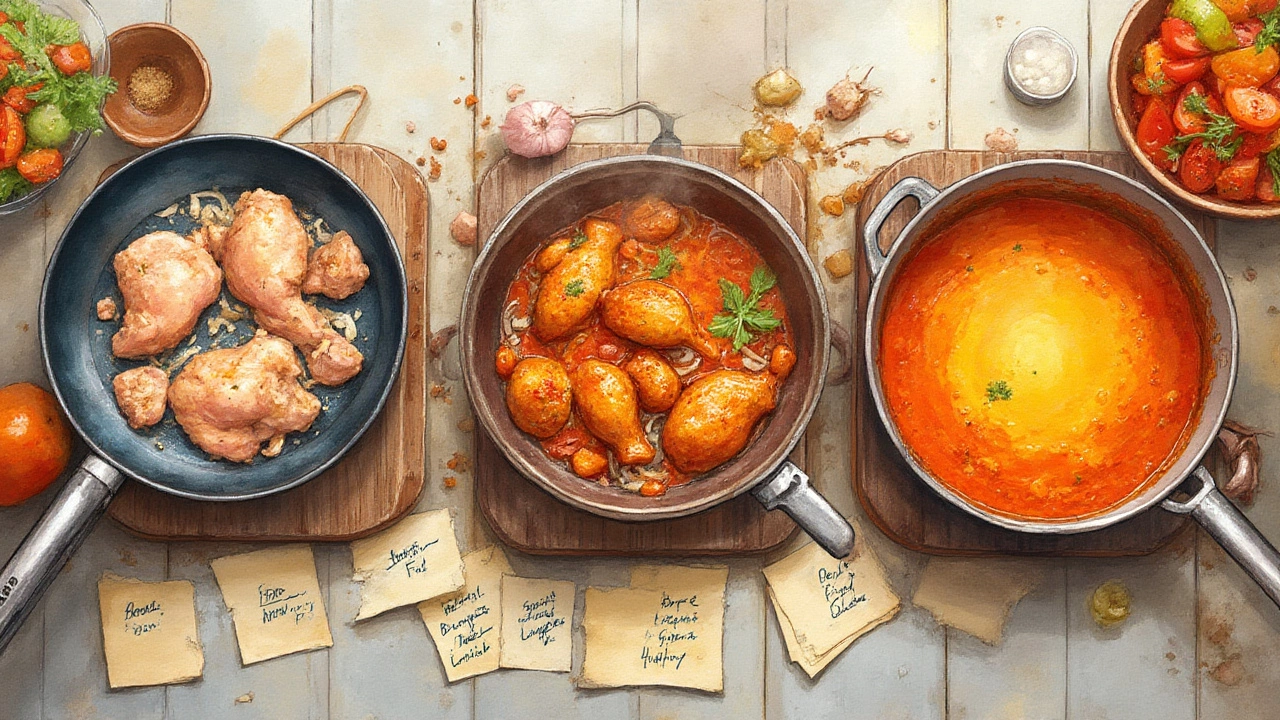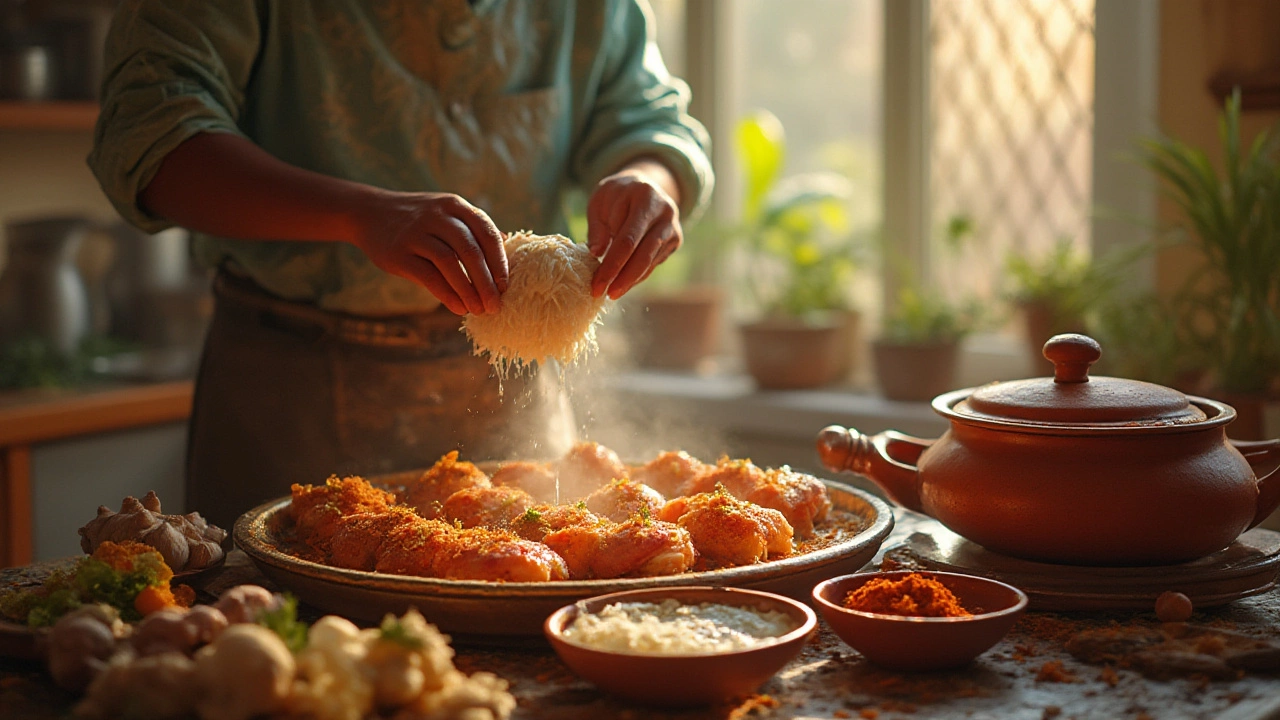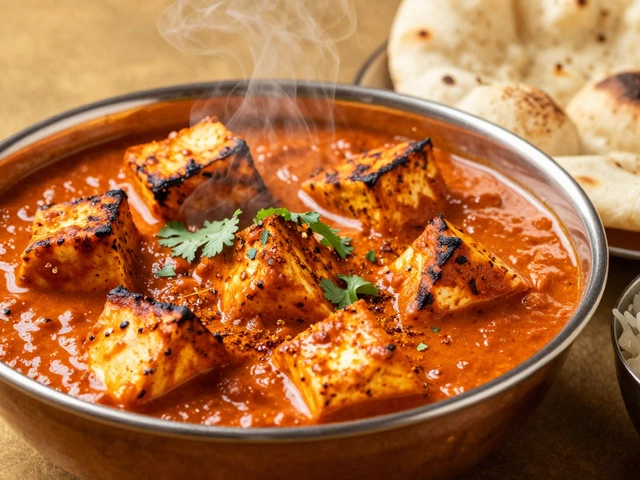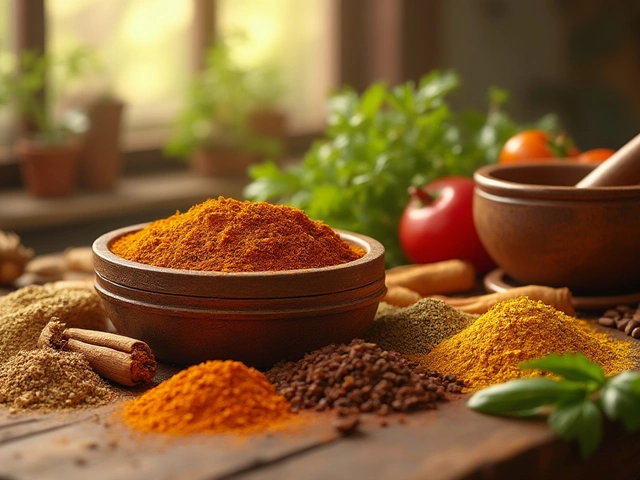Biting into dry, rubbery chicken when you’re expecting tender, mouthfuls of flavor can ruin even the best curry. Plenty of home cooks have faced this dilemma: is it better to sear and cook the chicken first, or just toss it raw into the curry and let everything simmer together? Skipping this choice leads to everything from stringy, overcooked bites to chicken so bland it barely tastes like anything at all. There’s trouble lurking either way—and plenty of passionate opinions swirling in kitchens across India and beyond.
The Science Behind Cooking Chicken for Curry
Getting great chicken in curry isn’t just about tradition; it’s rooted in the actual chemistry of meat and sauce. Chicken breast, for instance, dries out much faster than chicken thigh. Muscle fibers contract and squeeze out juices once temperatures climb above 74°C (165°F), and go higher with time exposed to heat. That’s why it’s not just about when to add the chicken—how you add it matters too.
Let’s talk proteins. Chicken is made up of proteins like myosin and actin. When these proteins are exposed to heat, they unravel and recombine, which changes the texture of the meat. The trick is to get them just cooked so the chicken is safe to eat—without crossing that line where it turns tough and stringy. Searing chicken first (often called browning) creates a thin layer of caramelization, thanks to the Maillard reaction. This isn’t just for flavor—those brown bits are packed with deep taste that gives curry more character. Cooking the chicken raw right in the sauce, on the other hand, has its own magic: the juices go into the curry, blending chicken flavor through every bite.
But here’s something people don’t always realize: chicken pieces continue cooking long after you stop the heat, especially if they’re buried in hot curry sauce. That means the timing of when you add your chicken changes everything.
Raw chicken added straight into curry does mean more flavor transfer. According to a 2021 kitchen experiment posted by the Indian Culinary Institute, the sauce was rated 17% higher in umami and chicken flavor when boneless chicken pieces were cooked from raw compared to when pre-cooked chicken was added near the end (blind taste test, 35 participants). However, that same experiment found that thigh meat performed much better raw, whereas breast meat remained juicier when quickly seared before going into curry.
So, the answer isn’t cut and dried—it’s a combination of timing, cut, and your own flavor preference. There’s a balance between keeping the chicken juicy and making the sauce deeply flavorful. Just remember: the main danger is overcooking. If you simmer the curry too long or use small pieces, you’re asking for disaster. Watch your timing—those small cubes only need ten minutes or so at a simmer, while a big leg might need a half hour.
Pros and Cons of Pre-Cooking vs. Adding Raw Chicken
Let’s break down the realities. Some cooks swear by searing chicken first—browning in hot oil before joining the curry party. Others plop in raw pieces and let curry magic happen. Each approach has some perks—plus a few not-so-great surprises.
- Pre-cooking (browning/searing) chicken:
- Pros: Adds tons of flavor through caramelization; locks in juices if seared fast and cooked just until golden. Reduces risk of undercooked chicken. Helps in curries where sauce cooks for a short time or where more oil is used (think kadhai chicken, butter chicken).
- Cons: If you over-sear or cook too long, you will end up with dry or stringy pieces. Some flavor stays in the seared bits left behind if you don’t deglaze the pan. Mixing pre-cooked chicken into simmering sauce often means it won’t absorb as much of the curry’s spice.
- Adding chicken raw and cooking in the curry base:
- Pros: The chicken juices help create a richer, more savory curry sauce (especially with on-the-bone pieces). The meat slowly simmers and absorbs the flavors of ginger, garlic, tomatoes, and spices. There’s less risk of overcooking if you monitor carefully.
- Cons: Sauce can become greasy if the chicken releases too much fat (especially with skin-on pieces). If you’re impatient, the chicken may not cook through. If it’s chopped too small, it can fall apart or go mushy. And you lose that tasty caramelization you get from browning.
It also depends on the style of curry you’re making. For cream-based dishes, like butter chicken, marinated and tandoor-roasted chunks get dropped into sauce at the last minute. For Bengali jhol, you’ll often see raw chicken pieces simmering in the gravy right from the start. Some home cooks in Kerala make a coconut chicken stew with boiled or blanched chicken, so it doesn’t overcook in the thin gravy. The point is, Indian cuisine is vast—there’s no "one right way." Your family, region, or favorite chef might suggest something else entirely.
Here’s a rough side-by-side:
| Method | Flavor Depth | Juiciness | Texture | Best For |
|---|---|---|---|---|
| Browning First | High, roasted notes | Varies—can be dry if overcooked | Firm, bite-sized | Butter chicken, kadhai chicken, spicier curries |
| Raw in Curry | Deep, meaty, juicy | Usually higher, especially with thighs/legs | Softer, falls off bone | Chicken stew, jhol, thin gravies, home-style curries |
| Poaching/Pre-boiling | Mild, brothy | Very juicy but can be bland if not spiced | Tender, soft | White curries, light korma, chicken salads |

Expert Tips for Keeping Chicken Juicy and Flavorful
Alright, what about practical tips to get chicken that’s both tender and packed with taste? I’ve grilled kitchen experts, combed through home-cook forums, and tested plenty of curries in my own kitchen. Here’s what actually works:
- Start with good chicken: Get bone-in, skinless thighs for curries needing slow simmering. They stay juicy and soak up flavor. Boneless breast is fine for quick-cook curries, but anything over 15–20 minutes and you risk dryness.
- Marinate first: Indian home cooks love yogurt, lemon, ginger, garlic, and spices for a reason. Even a 30-minute marinade breaks down some muscle fibers and infuses the meat. For extra juiciness, add a spoonful of oil or a pinch of salt to the marinade.
- Use the right timing: If browning, don’t fully cook the chicken before adding it to the sauce. Just get a little color, then finish in the curry. If adding raw, cut the pieces evenly, so they all finish cooking at the same time. For 3–4 cm cubes, 15–18 minutes at a simmer does the job.
- Don’t rush the simmer: A gentle, covered simmer is better than hard boiling—which can toughen the meat. Remove chicken once it’s just cooked (no pink in the center), and let the curry rest for 5–10 minutes before serving so juices settle.
- Deglaze your pan: After browning, always scrape up those savory brown bits with a splash of water or broth when you start your onions and spices. This pulls all that flavor back into your sauce.
- Adjust seasoning at the end: Chicken can mute salt and spice levels, especially when raw pieces cook in the sauce. Taste and adjust before you serve.
- For extra-soft chicken: Shredding chicken thigh into a curry at the end creates a hearty, homestyle texture that holds more sauce—try it in korma for a comforting change.
And, don’t forget a kitchen thermometer if you want to nail cook chicken before curry safety every single time. Chicken should hit 74°C (165°F) at the thickest point, even when bathed in rich curry sauce. Don’t eyeball it—uncooked chicken is nobody’s friend.
Which Method Works Best for Different Chicken Curry Recipes?
Curious about which method to use for all the varieties of chicken curry out there? Let’s map out a few tried-and-true matches so your next dinner turns out just like you want:
- Butter Chicken/Murgh Makhani: Traditionally, the chicken is marinated, roasted or tandoor-cooked until just done, then folded into a silky tomato-cream gravy. If you can’t tandoor, grilling or pan-searing gets you close. Add the cooked chicken at the end, then simmer gently for 5 minutes to meld flavors.
- Home-Style North Indian Curry: Marinated, raw, bone-in chicken is added to the masala base and simmered in its juices and sauce until done. This leads to gravy drenched in chicken flavor, with meltingly soft thigh-and-leg pieces.
- Kadhai Chicken: Brown large chunks in hot oil with peppers and onions, then simmer briefly in sauce so the chicken retains some bite. Don’t overcook during browning—the final few minutes in the curry are all it needs.
- Coconut Chicken Stew: Some South Indian stews start with blanched or poached chicken, which is later simmered with coconut milk and aromatics. The gentle heat prevents overcooking delicate chicken.
- Quick Chicken Curries: For recipes under 25 minutes, use boneless thigh or marinated small pieces, dropped raw into the masala—just simmer until cooked through. Pre-cooking isn’t needed unless you want brown edges.
- Slow Cooker Recipes: Always use larger bone-in pieces and add raw; they’ll become juicy and tender with the long, slow heat.
Seasoned cooks report that when you fry chicken for just 2–3 minutes with your spices before adding liquid, the aroma is deeper—and the texture is better than when chicken is braised for too long. But if you’re going traditional with bone-in, toss it all in after your onions and tomatoes have caramelized, stir well, and then cover and forget for half an hour.
And if you are experimenting, keep notes—you’ll quickly spot which method works best for your favorite recipes and your family’s texture preferences.
Picking whether to cook chicken before adding to curry isn’t just a technical decision; it’s a level-up moment for your curry game. Think about your ideal curry—saucy, spicy, the chicken juicy enough to soak up all those flavors. Choose your method, nail the timing, and don’t be afraid to tweak until you hit that sweet spot. After all, great chicken curry is more about practice (and maybe a little bit of obsession).











